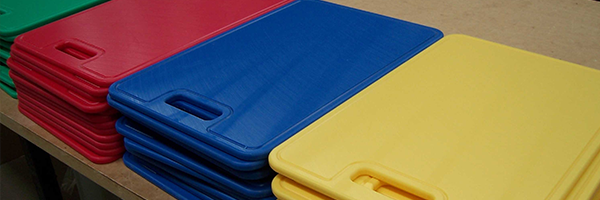What is plastic fabrication?
April 8th, 2015
Clients are well familiar with these toxic situations. Moving parts are in constant contact with raw materials, creating a constant force of abrasion. There’s heat and cold, chemical toxicity and load stresses, meaning we can dispense with further accounts of the outside forces that define the material characteristics of the plastic. Instead, let’s put a spotlight of discovery on the fabrication process. Once that properly graded plastic has been selected by the engineer and any prototyping work has been completed, its’ past time that the product began to be manufactured. This entails the cutting, welding, extrusion, and machining of the part. Alternatively, a moulding methodology is applied. It’s no coincidence that many of these working practices adopt a systemic course of action that closely aligns with metal and wood, except plastics are far more adept when it comes to altering their properties. Nonetheless, plastic fabrication shares key machine tool profiles, including:
- CAD design applications
- Subtractive CNC machining (3-axis milling and turning)
- Edge polishing for the perfect surface finish
- Welding (Plastic welding)
The clarification of the plastic fabrication model does, of course, see a divergence between polymers and metal. Firstly, machine tools use the same axial movements to manipulate raw products but the tool edge is adapted to match the malleability of plastic, the material tolerances that make plastic such a desirable replacement when compared with other, older substitutes.
The fabrication of engineering-grade plastic calls upon immense resources, skill, and a full factory floor of machines to cut, shape and otherwise manufacture 2-D and 3-D plastic parts. We could list those plastics at this point, the near unlimited lines of Nylon, Polyurethane, Polycarbonate, and other multi-syllable polymer solutions commonly found in industry, but we choose instead to relate the craft that’s involved in fabricating each material into a marketable component. Imagine a high-end engineering plastics facility and the daily graft it takes to select materials and infuse those materials with unique geometrical profiles. Business-focused to ensure this activity is sublimely repeatable, 24/7, Industrial Plastics Solutions excels in this field.
Get in touch with Industrial Plastic Solutions
Mobile: 0400967210
Phone: (03) 9798 1153
Fax No: (03) 9798 1915
Email:
ipssolutions@bigpond.com
Address:
Factory-20, 29-39 Kirkham Road West, Keysborough VIC-3173
Business Hours:
Monday – Thursday 8.30am to 4.30pm
Friday 8.30am to 3.30pm
Saturdays by appointment only.
Optimized by NetwizardSEO.com.au







